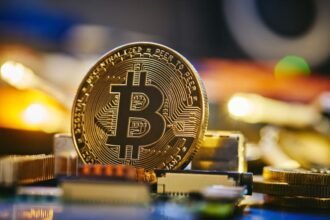With a daring and contentious decision, the US has added 25% extra duties on imported steel and aluminum. Because American manufacturers were put first, the move worries many foreign countries and companies that rely on foreign metals. Dissenters argue that it may increase the amount manufacturers pay, which could lead to retaliation, and supporters say it will foster the growth of domestic production. Because the announcement came during international economic talks, the debate has become more important. With international eyes on the situation, these tariffs might change the world’s trade patterns for many years.
- What Made the United States Raise Tariffs All at Once?
- What Are the Effects will this have on the US Economy?
- Would This Lead to a Worldwide Trade Dispute?
- How Does This Affect People Who Buy U.S. Goods?
- What Evidence Shows for the Benefits Domestic Producers Receive?
- How Are The Leaders of Companies and Organizations Physically Preparing?
- What Factors Have Caused the country to Increase Tariffs?
- Could There Be Long-Lasting Impacts on the Rules of International Trade?
- Is It Possible to Negotiate the Plan or Back Down a Bit?
- Conclusion: Taking Major Risks That Affect the World
What Made the United States Raise Tariffs All at Once?
President Trump decided to double steel and aluminum tariffs to 50%, according to a broader objective of boosting manufacturing in the country. According to those in the administration, the problem is mainly about opposing unfair deals made by countries producing goods in large amounts and flooding international markets. According to the government, these steps are needed to look after important industries, lower reliance on buying from abroad, and preserve national security. Although tariffs have been a part of U.S. trade previously, this time they are being used at a much greater scale and earlier than in the past.
What Are the Effects will this have on the US Economy?
A rise in tariffs on steel and aluminum is likely to be felt throughout the entire U.S. economy. On one side, lower foreign competition could let domestic producers increase their output and hire more workers in the short run. But the automotive, construction, and packaging industries must pay much higher costs due to their use of imported goods. Because of this, consumers will probably have to pay more, adding to inflation, which is already a problem. Some economists worry that while the policy could help a handful of industries, the general economic effects may not be positive in the long run.
Would This Lead to a Worldwide Trade Dispute?
There are other changes accompanying the doubling of tariffs. It arrives when countries are becoming more involved in trade disputes and during talks among leading economies about working together. Those countries most hit by tariffs are likely to take retaliatory steps. Several countries have suggested that they may impose tariffs or complain about Trump’s actions to trade organizations. Such actions back and forth could result in a larger trade battle, affecting things like farming and technology trade. When tensions remain unsolved, global supply chains might struggle, and investors might not be as confident about investing in international trade.
How Does This Affect People Who Buy U.S. Goods?
While American consumers may not see the consequences right away, they will probably become obvious with time. If the tariff on steel and aluminum for imports increases, the costs of many products that have steel and aluminum will rise, or cars, appliances, canned goods, and electronics, too. Higher manufacturing expenses usually cause retail prices to go up. Retaliation from other nations could make American exports less attractive overseas, which might result in fewer jobs in farming and manufacturing. Although the policy supports American industry, a large share of the costs may be passed on to consumers.
What Evidence Shows for the Benefits Domestic Producers Receive?
On paper, the local market becomes more profitable for makers when their rivals face more competition, and locals are likely to buy more. Both steel and aluminum companies could see a spike in orders for now, leading to more work and possibly hiring. But some argue that these policies stop companies from becoming better and more advanced as time goes on. Domestic businesses might also take advantage of their restricted exposure to global trade by making their goods more expensive, but not by bringing about important improvements. The threat of retaliatory tariffs might reduce the long-term profitability of American metal manufacturers.
How Are The Leaders of Companies and Organizations Physically Preparing?
What industry leaders are saying has been mixed. Most executives from companies involved in metal production have supported the move, saying it is important for equal competition. At the same time, such associations are worried about the impact of rising costs and shrinking profits. Some tech and auto firms say that because they buy a lot of parts from outside, the tariffs could cause delays or even stop their plans to bring new items out. Due to their limited margins, many small and mid-sized firms might struggle with the extra costs, which could result in employees being let go or the company closing. Read another article on aluminium tariffs
What Factors Have Caused the country to Increase Tariffs?
People point out that the announcement of tariffs has strong political overtones. Talking about the policy as protection for American jobs and industries appeals to people who live and work in regions with many factories. The timing, being right before an election, suggests the decision was meant to ensure support in key places where the vote is close. When tariffs rise, often people feel supported by such actions since they think globalization has negatively affected jobs in their own country. Even though these choices are successful politically, they might negatively impact the economy if they cause lengthy conflicts over trade.
Could There Be Long-Lasting Impacts on the Rules of International Trade?
If the United States keeps imposing strict tariffs, other countries might choose to do the same thing. Switching to protectionist policies might reduce the strength of worldwide trade standards. Ensuring global business activities remain steady can lead to more requests for these entities to solve problems. A drop in multilateral agreements may mean there would be smaller groups of countries with their different policies. In this case, small and medium economies could suffer a lot, since they have less power to bargain and negotiate.
Is It Possible to Negotiate the Plan or Back Down a Bit?
Even though tariffs have taken effect, trade policies are usually adaptable. Results from international negotiations and important economic figures over the next few months will play a big role. In cases where people feel worse off at home or other countries put more pressure on the tariffs, there may be pressure to change or stop them. From previous instances, it is clear that tariff issues can be solved when there are discussions or agreements that adjust or relax the tariff fees. If people keep talking about nationalistic ideas, negotiation opportunities may become much less common.
Conclusion: Taking Major Risks That Affect the World
By enthusiastically raising steel and aluminum tariffs to 50%, the United States is trying to change the course of trade and take charge of the economy. Although it might provide short-term gains to politics and industry, it puts global trade, local businesses, and consumers in danger. Any widespread impact on the world economy often results from issues in just one small area. Whether this move will lead to better American manufacturing or cause problems in trade is yet to be seen. It is also obvious that this step is shaping the future of economic policies in the U.S.








